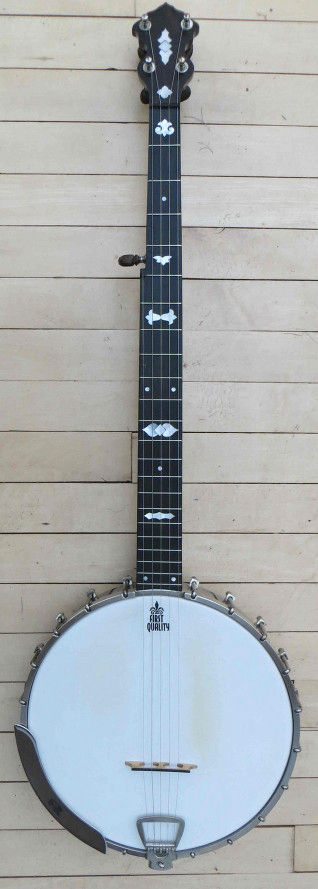was born in Kentish Town, London in 1859 William James Clifford Essex.
In 1882 he disolved the Herbert & Co. Wine Merchant partnership, he had with James Herbert.
In 1893 Clifford Essex and Alfred D. Cammeyer formed a partnership with offices and teaching studios at 59 Piccadilly, London. At first, the banjos and zither-banjos they sold under the brand name of "Essex & Cammeyer" where made for them by Temlett, Weaver, Wilmshurst and Windsor but early in 1896 they opened their own workshops at 13 Greek Street, Soho, and were soon employing fourteen workmen to make banjos and zither-banjos for them.
Clifford Essex dissolved his partnership with Cammayer in 1900 he formed his own firm at 15a Grafton Street, off New Bond Street, London. W. and instruments bearing. the name Clifford Essex Co." were put on the market. At first all the banjos were made for Clifford Essex by Spencer, Weaver, Langham (in London) and Houghton (of Birmingham) -but in 1904 he started his own workshops at The Oval, Kensington, with Alfred Dare as foreman.
1900 to 1936 15a Grafton Street, London W,
1936 to 1942 90 Shaftesbury Ave., .
1942 to 1957 8 New Compton St.,
1957 on 20 Earlham Street.
Additional informtion ..
Clifford Essex .. 1859 to 1946

